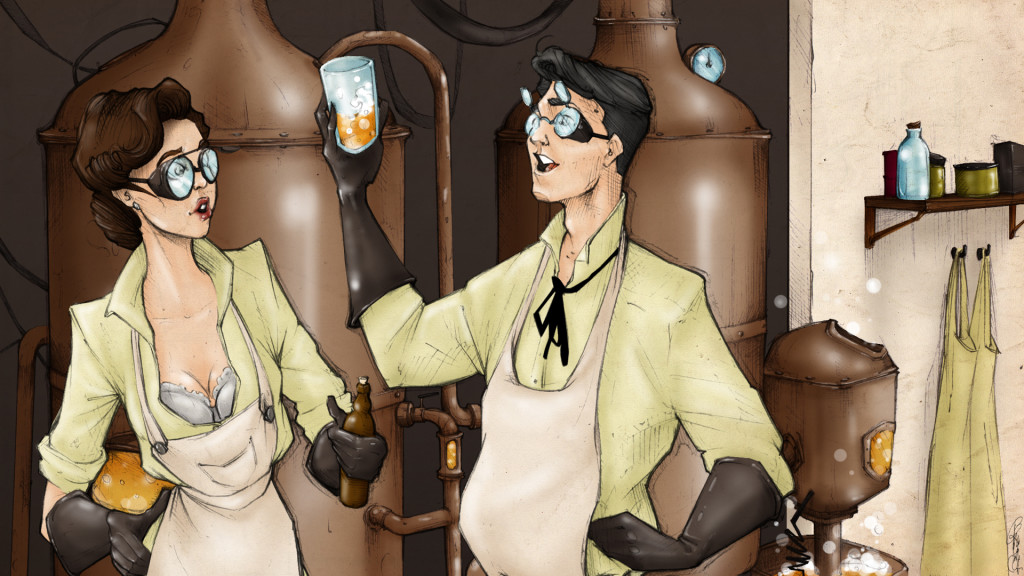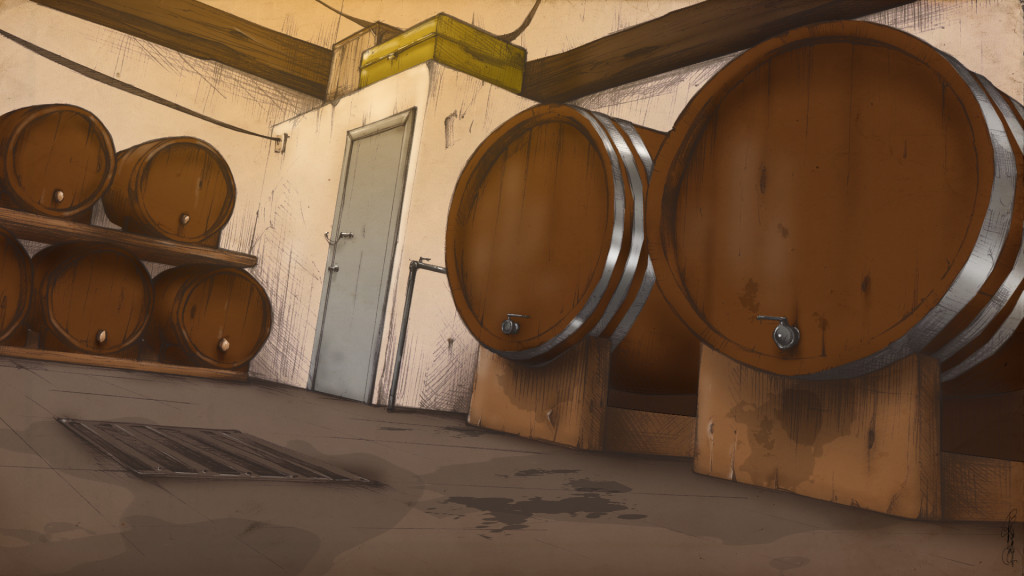Beer Making Done 3 Ways – How To Make Beer
Beer making is not much more complicated than making a pot of tea. Can you heat water and steep a tea bag in it? Can you then remove that tea bag and drink the tea once it’s cool enough? Beer making isn’t a whole lot more complicated than that!
The only difference between making a pot of tea and brewing a six-pack of beer is that you won’t be steeping tea leaves in the beer-making process, but instead, an ingredient called “malted barley.” The steeping process will turn the otherwise unfermentable starches in the barley into simpler fermentable sugars. You’ll then bring that sugar water, now called “wort,” to a boil and make your hop additions.
Instead of letting the wort cool to drinking temperature like you would with a tea, you will bring the wort to fermentation temperature and add a small amount of yeast. After closing off the fermentation vessel of your choice and blocking your brew from the influence of unwelcome bacteria, all that’s left for you to do is wait until fermentation ceases, filter out any barley or hop particles, bottle your beer, let the drink carbonate and then enjoy!
- Step 1: Sanitize your work environment and lab equipment.
- Step 2: Gather together all of the tools and beer making ingredients you will need.
- Step 3: Clean and filter your water.
- Step 4: Steep your extract and/or malted barley (heat in hot water like you would with tea).
- Step 5: Bring your heated extract/barley water (“wort”) to a boil and add your hops.
- Step 6: Bring your wort to fermentation temperature and then add yeast.
- Step 7: Filter out any barley or hop particles from your liquid concoction.
- Step 8: Pour your beer into your fermentation vessel and then let your beer ferment.
- Step 9: Bottle your beer and let it carbonate.
- Step 10: Drink up… and enjoy!
That doesn’t sound too difficult, does it? It’s so simple a concept that its mere mention sends shivers down the spine of the corporate bigwigs that want nothing more than to put a stranglehold on beer production in your locale.
Beer Making: The Three Main Ways To Brew Beer
I go over the ten steps mentioned above (in much greater detail) inside Dr. Homebrew’s How-To Beer Book. For now, however, it’s important that you understand that as simple as beer making can be, there are a number of different ways to go about the process. In fact, there are three main ways in which beer can be produced… and these three main techniques are known as: extract brewing, partial-mash brewing and all-grain brewing.
Extract Brewing
Extract brewing is considered to be the easiest and most appropriate type of brewing for creating your own unique beer flavors while at the same time familiarizing yourself with the beer brewing process. For this reason, most new homebrewers begin by learning extract brewing.
Extract brewing is the act of beer making with one key step having already been done for you – the act of mashing the original grains. During extract brewing, this process has been accomplished for you by a team of experts who produce a liquid called “malt extract,” which is a syrup-like substance that contains all of the necessary enzymes, vitamins, minerals, and converted sugars required for feeding the yeast during the fermentation of your finished beer. This malt extract is mixed with boiling water during the first step of the extract brewing process.
Nearly every beer in the world can be brewed with malt extract, provided of course, you use the right type of extract for the beer you wish to brew. It’s choosing the type of extract you work with that will make or break your beer when aiming for a certain style. There are extracts catered towards dark beers, light beers, wheat beers and more! You simply start with a malt extract for the type of beer you wish to create and then continue on with the beer brewing process like your normally would, having skipped over the mashing steps that normally come first.
Extract brewing is a great way to brew your first beer because it can be done quickly and with minimal equipment. All you need to get started is a large pot to boil your water and malt extract in, and a fermentation vessel of some kind.
To make a beer by way of extract brewing, all you do is take your malt extract and mix it with boiling water – thereby creating something we brewers call “wort.” After your wort has been heated, you’ll need to add your flowery hops and then bring your boiling wort water down to fermentation temperature as speedily as possible (usually by submerging it in a bucket of ice). Finally, you’ll pour your wort and hop mixture into your fermentation vessel, add your yeast and then wait for the liquid to ferment. It’s that easy!
If you’re a beginner to the beer brewing process, I highly recommend you start with extract brewing. One of the easiest and most common ways to do this is by purchasing a beer brewing kit (either online or from your local homebrew store). Any quality homebrew outlet will carry a wide variety of extract brewing kits for you to get started with. After purchasing a kit, the only thing you’ll need to begin creating your own mouth-watering drinks is a little water. Everything else should be accounted for in the kit! With this kit in hand, a little elbow grease on your part, some water, and a maniacal laugh fit only for a mad scientist, you’ll have no trouble creating your first tasty brew.
Extract brewing is hands down the easiest and least time-consuming way to craft your own delicious drinks, but don’t let its simplicity fool you. Beer making by way of extract brewing is no less flavorful or rewarding than brewing a beer in any other manner.
Because of the simplicity inherent to using malted extract, you will have more time and freedom to formulate your own recipes while fine-tuning your own unique beer flavors. Extract brewing is the perfect way to learn about, simplify and master the beer-brewing process. Plus, you don’t have to restrain your creativity to the recipes included in beginner beer kits. As you become more experienced, you can begin to tweak the flavor profiles of your beer by adding more extract to your brew, using different types of extracts in conjunction with one another, using different types of hops or yeast, or experimenting in any way that you please. The sky’s the limit when you use extract brewing to craft your own delectable beers.
Partial Mash Brewing
With extract brewing, your beer gets much of its color and flavor from the extract(s) that you choose to use. Partial mash brewing, however, is a combination of extract brewing and all grain brewing (which we’ll talk about in just a moment). While extract brewing is both convenient and consistent due to the fact that the starch conversion has been done for you by a team of experts, partial mash brewing requires that you create your own individualized flavor by combining extract syrup with base and specialty grains in order to either bolster the gravity/sugar content or to alter the color/flavor of your finished beer.
Partial mash brewing is aptly named because part of the sugars needed for the beer making process come from the barley extract while the other sugars come from malted barley during the mashing process. This type of beer making is great for intermediate homebrewers because it’s not only a happy medium between small scale and mass-scale beer production, but it’s also a convenient way for brewers to familiarize themselves with the processes involved in all-grain brewing.
Because partial mash brewing involves mashing your grains, there are not only a few more skills you need to learn in order to pull off a successful brew, but also a few more tools you need to possess.
All-Grain Brewing
All-Grain brewing is the next and final step in your beer making education. While most of the practices used in partial-mash brewing will carry over to all-grain brewing, there is one major exception – no malt extract!
During the all-grain brewing process, the color, sugar, body and flavor of your finished beer will be determined in large part by the malted barley used during mashing. It’s only with all-grain brewing that you have total control over your final product and your prowess as a seasoned beer brewer will truly shine through. It is, therefore, all-grain brewing that nearly all professional brewmasters use when making beer on a commercial level.
It’s also here, during the all-grain brewing process, that faults and mistakes are less likely to be forgiven. Even the most subtle diversion from your intended recipe can cause the beer you were aiming to create to turn into something else entirely. The ability to fine tune your beer is a double edged sword that will either elicit a fantastically enjoyable brew that you’d proud to call your own, or turn out devastatingly sour and perplex you for months as you strive to determine what went wrong.
For the average beer brewer, the most important consideration during the all-grain brewing process is that of balancing flavor with fermentability. The more grain you use, the more alcohol you’ll be able to ferment. The more specialty grains you use, the greater the potential for flavor and color variation. The more complex you make your recipe, the longer the beer making process will take to complete and the greater chance you’ll have of steering astray of your original goal. Simplicity is key when concocting new recipes in this manner and only after you’ve mastered the basics of all-grain brewing should you begin to worry about more complex and exotic mashing protocols.
HOMEBREWRS: As you continue your homebrewing education, remember that your ancestors happily drank many a beer made with tools and techniques that predate airplanes, electricity and the Internet… and they did so for far more generations than you can count. While it may be tempting to jump straight into all-grain brewing, I strongly suggest you work first with a minimal amount of lab equipment while familiarizing yourself with the beer brewing process. Only after you’ve mastered both extract and partial-mash brewing should you consider taking on the all-grain brewing process.


